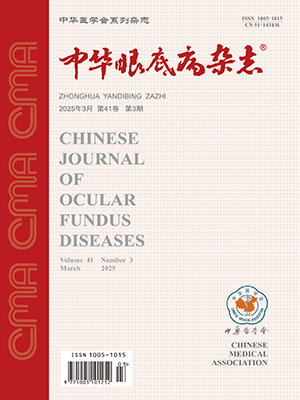Objective To observe the surgical effects of photocoagulation and vitrectomy on familial exudative vitreoretinopathy (FEVR). Methods The data from 32 eyes of 17 patients with FEVR diagnosed in our department from January 1997 to August 2005 were analyzed retrospectively. The methods of treatment had been chosen according to the disease extents. Seven eyes ( stage 1 in 2 eyes, 2A in 1 eyes, and 2B in 4 eyes) had undergone peripheral photocoagulation with the follow-up period of 6-108 months (the average was 20.29 months); vitrectomy had been performed on 13 eyes(stage 3B in 2 eyes,4A in 1 eyes, 4B in 6 eyes, and 5A in 4 eyes) with the follow-up period of 3-108 months ( the average was 20.65 months); 12 eyes had received none of the treatments due to the serious extents, age, and the selection of the patients prime; relations. Results In 7 eyes treated with peripheral photocoagulation, the disease was stable and visual acuity remained unchanged during the follow-up period . In 13 eyes undergone vitrectomy, reattached retina was found in 12; visual acuity improved in 9, kept still in 3, and was unknown in 1 because of the patient prime;s noncooperation. Conclusion Photocoagulation may prevent the development of FEVR, and vitrectomy can promote the reattachment of retina and improvement of the visual acuity in patients with FEVR. These two treatments are effective on FEVR. (Chin J Ocul Fundus Dis,2006,22:302-304)
Citation: ZHAO Peiquan,YU Yingqing,SHAN Haidong,et al.. Treatment for familial exudative vitreoretinopathy. Chinese Journal of Ocular Fundus Diseases, 2006, 22(5): 302-304. doi: Copy
Copyright © the editorial department of Chinese Journal of Ocular Fundus Diseases of West China Medical Publisher. All rights reserved




